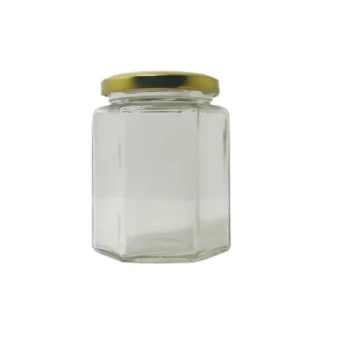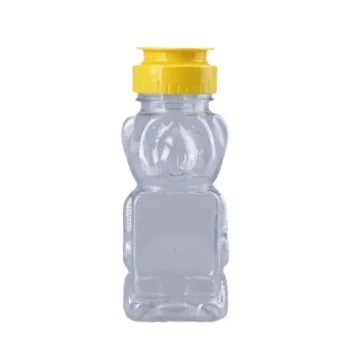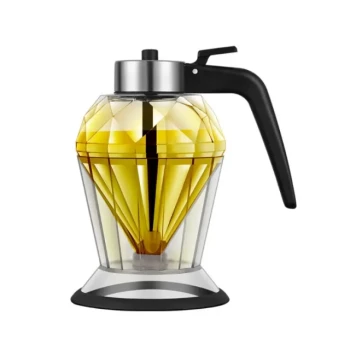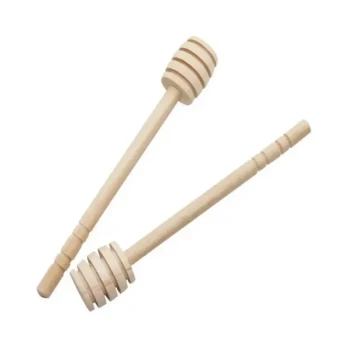The most critical considerations for honey packaging are the use of airtight, non-reactive materials like glass or food-grade plastic. This primary choice serves to protect the honey from its main enemies: moisture, chemical contamination, and UV light. Proper packaging is essential for preventing crystallization, preserving flavor, and ensuring the product remains safe and pure from the hive to the consumer.
The core function of honey packaging is to create a fortress. Your goal is not just to hold the honey, but to defend its unique chemical stability and delicate flavor profile against degradation from air, light, and foreign substances.

The Core Principles of Honey Preservation
Honey is a remarkably stable natural product, but that stability depends entirely on maintaining its low moisture content and protecting it from external elements.
Preventing Moisture Contamination
Honey is hygroscopic, meaning it readily absorbs moisture from the air. If the water content rises, dormant yeast spores naturally present in the honey can activate and cause fermentation.
An airtight seal is non-negotiable. This is the first line of defense against moisture absorption, which preserves the honey's quality and prevents it from spoiling.
Choosing Non-Reactive Materials
The material of the container must not interact with the honey. Honey is slightly acidic, and this acidity can cause chemicals to leach from poor-quality materials over time.
Glass is the gold standard because it is completely inert, impermeable, and has a premium feel. Food-grade plastics (like PET) are also excellent, safe, and widely used alternatives.
Shielding from Light and Heat
Direct sunlight and high temperatures can damage honey. UV light exposure can degrade sensitive enzymes and vitamins, while heat can darken its color and alter its flavor.
Store packaged honey at a stable room temperature (around 64-75°F), away from direct sun or heat sources like stoves.
Building Consumer Trust Through Packaging
Effective packaging does more than preserve the product; it communicates safety and quality to the customer.
The Role of Tamper-Evident Seals
A tamper-evident seal provides a clear, visual indicator if a container has been opened. This can be a simple shrink-wrap band around the lid or a pop-up safety button on a metal cap.
These seals are crucial for building consumer trust. They provide assurance that the product is safe, fresh, and has not been contaminated since it was packaged.
Ensuring Regulatory Compliance
All packaging materials that come into contact with food must meet safety standards, such as those set by the FDA.
Using certified food-grade materials ensures that no harmful substances will migrate into the honey, protecting both the consumer and your brand's reputation.
Understanding the Trade-offs: Glass vs. Plastic
The two most common materials each come with distinct advantages and disadvantages that impact cost, shipping, and consumer perception.
The Case for Glass
Glass containers offer the highest level of protection and are perceived as a premium option. They are completely non-reactive and provide an excellent barrier against moisture and gases.
However, glass is heavier, more fragile, and more expensive to ship than plastic, making it a potential challenge for larger-scale distribution.
The Case for Food-Grade Plastic
Plastic, specifically PET (polyethylene terephthalate), is the most common alternative. It is lightweight, shatter-resistant, and significantly cheaper to transport.
While perfectly safe, it doesn't always carry the same premium perception as glass. It's also important to ensure you are using high-quality, food-grade plastic to avoid any possibility of chemical leaching.
Making the Right Choice for Your Goal
Your packaging decision should align directly with your brand, budget, and distribution strategy.
- If your primary focus is artisanal quality and shelf appeal: Glass is the ideal choice for its inert properties and premium consumer perception.
- If your primary focus is cost-efficiency and durability for shipping: Food-grade PET plastic provides a safe, lightweight, and economical solution.
- If your primary focus is user convenience: Squeezable plastic containers with drip-resistant caps offer an unmatched, user-friendly experience.
Ultimately, your packaging is a direct reflection of your product's quality and your commitment to the customer.
Summary Table:
| Key Consideration | Why It Matters | Best Material Examples |
|---|---|---|
| Moisture Barrier | Honey is hygroscopic; prevents fermentation and spoilage. | Glass, Food-grade PET Plastic |
| Non-Reactive Material | Protects against chemical leaching and preserves purity. | Glass (gold standard), Certified Food-Grade Plastic |
| Light & Heat Protection | Shields delicate enzymes and vitamins from UV degradation. | Opaque or dark-tinted containers |
| Tamper-Evident Seal | Builds consumer trust and ensures product safety. | Shrink-wrap bands, Pop-up safety caps |
Ready to Package Your Honey with Confidence?
As a leading wholesale supplier to commercial apiaries and distributors, HONESTBEE provides the durable, high-quality packaging solutions you need to protect your product and your brand. We offer a range of airtight, food-grade containers designed to meet the rigorous demands of large-scale honey production and distribution.
Contact our packaging experts today to discuss wholesale pricing and find the perfect solution to preserve your honey's quality and streamline your operation.
Visual Guide

Related Products
- Classic Drum Shaped Glass Honey Jar with Airtight Lid
- Hexagonal Glass Honey Jars with Metal Lug Caps Elegant Versatile Packaging
- Inverted Squeezable Honey Jar with No Drip Flip Top Cap for Easy Pouring
- Classic Honey Bear Jars with Flip Top Dispensing Cap for Liquid Sweeteners
- Pneumatic Double Nozzle Honey Filling Bottling Packaging Machine
People Also Ask
- What is done with the honey after extraction and filtering? From Purification to Perfect Packaging
- What precautions should be taken when packing honey? Ensure Quality from Hive to Jar
- What is the best way to jar honey? Preserve Quality with the Right Container
- How long to let honey settle before bottling? Achieve Crystal-Clear Honey for a Premium Product
- What makes raw honey more aesthetically appealing than processed honey? Discover the Beauty of Authenticity



















